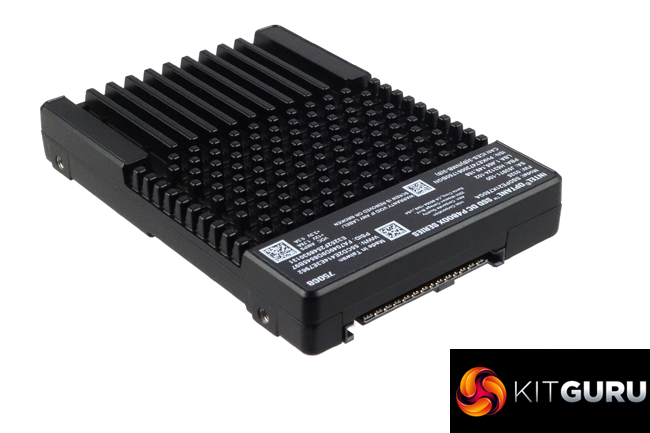Intel's Optane DC P4800X has been designed to handle storage workloads such as SAN, cloud, database, big data, high-performance computing and software defined storage at low latencies.
At launch the drive was only available in a 375GB capacity and in two form factors: 2.5in 15mm U.2 and an HHHL add-in card. The larger flagship 750GB drive we are reviewing here came along a few months later and again it's offered in the two form factors. As Intel points out “Increased capacity and multiple form factors expand data centre implementation options and deliver both solution-level and total cost of ownership flexibility for customers”.
Intel quotes Sequential performance figures for the 750GB DC P4800X as up to 2,500MB/s for reads and up to 2,200 MB/s for writes, figures which are not earth shattering when compared to NAND flash based NVMe drives. But clearly, out and out Sequential performance is not what the drive is about.
In any case, we could confirm both the official read and write numbers with the ATTO benchmark, with the review drive producing a read figure of 2,572MB/s and writes at 2,236MB/s. When benchmarked with our 128KB Sequential tests the drive peaked at 2,680MB/s for reads and 2,410MB/s for writes.
By using Intel 3D XPoint memory technology, the DC P4800X brings high throughput at low latencies, particularly when it comes to read performance. This is just what is needed to service latency sensitive workloads in the data centre environment more efficiently and at lower transaction costs than with standard NAND flash.
The endurance numbers quoted by Intel for the drive are also very impressive to say the least. It's rated at 30DWDP, which works out to around 41PBW (petabytes!) over the length of the 5-year warranty Intel back the drive with.
We found the 750GB Intel Optane DC P4800X for sale from Ballicom for £2251 HERE.
Pros
- Overall performance.
- Performance at low queue depths.
- Performance stability.
- Endurance.
- Choice of form factors.
Cons
- Sequential performance isn't exactly earth shattering.
- Drive range only extends to 750GB.
KitGuru says: Designed for use in data centres, Intel's Optane DC P4800X may not have the out and out Sequential performance of some NVMe drives in the marketplace, but that's not what it's really about. What it does offer, thanks to the 3D XPoint memory technology, is high throughputs at low latencies and queue depths.
 KitGuru KitGuru.net – Tech News | Hardware News | Hardware Reviews | IOS | Mobile | Gaming | Graphics Cards
KitGuru KitGuru.net – Tech News | Hardware News | Hardware Reviews | IOS | Mobile | Gaming | Graphics Cards




